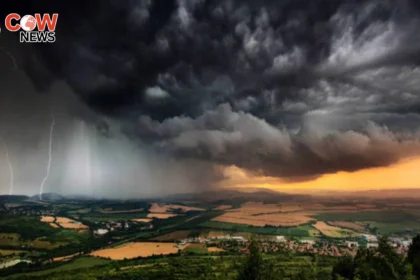By Fiazan Hussain
Part 2
As the Abbasid Caliphate began to fragment in the late 9th century, regional movements gained momentum in eastern Iran. Among the first were the Tahirids (821–873 CE) in Khorasan, who declared a degree of autonomy from Baghdad. Though still nominally loyal to the Caliph—delivering sermons in his name—their administration operated independently, laying the groundwork for a resurgent Persian polity.
Rooted in local governance, the Tahirids prioritized administrative continuity, retaining many Sasanian-era fiscal and agricultural systems. Their leadership emphasized military readiness, with provincial governors taking on dual roles: both tax-collectors and military commanders. The shift empowered regional elites and helped revive Persian culture, particularly through patronage of architecture and public works.
Following the Tahirids, the Saffarid dynasty (861–1003 CE), founded by Yaqub ibn Layth al-Saffar, emerged in the southern provinces. Though brief, their rule challenged Abbasid control and spread early signs of ethnolinguistic revitalization. Under the Saffarids, local courts began to promote Persian language and identity once more.
Their legacy found fuller expression in the Samanid dynasty (819–999 CE), which united Khorasan and Transoxiana into a cultural powerhouse. The Samanids embraced Persian as both court and literary language, vastly expanding education, religious scholarship, and statecraft. Cities like Bukhara and Samarkand flourished under their rule, becoming beacons of Persianate civilization under Islamic governance.
Under the Samanids, New Persian—written in an adapted Arabic script—took root, enabling a literary and poetic revival. The emergence of poets like Rudaki, often hailed as the “father of Persian poetry,” marked a renaissance in the arts. Building on Sasanian traditions of epic storytelling, Persian literature matured into a refined and philosophical genre.
Education, too, advanced. Religious scholars in Kufa and Bukhara developed legal theory, combining Islamic jurisprudence (fiqh) with Persian intellectual heritage. Meanwhile, Sufi mysticism—with luminaries like Attar of Nishapur and Rumi of Balkh—melded ascetic piety with Persian mysticism. Their emphasis on inner enlightenment and divine love nourished a shared spiritual identity across the Muslim world.
After the Samanids, Persia entered an era of political fragmentation, with several minor Iranian dynasties rising across the former Caliphate. Among the most influential were the Buyids (934–1062 CE), who seized control of Baghdad in 945 CE. Though still acknowledging the Abbasid Caliph, the Buyids wielded executive, military, and financial authority.
Under their rule, the caliph became more of a spiritual figurehead while the Buyid emirs exercised real power. They championed Persian culture and sponsored scholarly works in philosophy, medicine, and astronomy. Notably, the Buyids oversaw construction and restoration projects, blending Persian architectural styles—use of intricate tilework, calligraphy, and monumental domes—with Islamic design principles.
In the mid-11th century, the Seljuk Turks swept into the Iranian plateau, claiming stewardship over the Islamic empire. Though ethnically Turkic, the Seljuks absorbed and patronized Persian culture and bureaucracy. Their reign saw a golden age of Islamic architecture, with the construction of grand masjids, madrasas, and caravanserais across Khorasan and beyond.
Under Seljuk rule, key institutions—such as the Nizamiyya madrasas—emphasized theology, law, and philosophy. While Arabic remained dominant in religious sciences, Persian steadily grew in literature, administration, and popular discourse.
The Mongol invasions of the early 13th century shattered the Seljuk political order. After devastating campaigns,** Hülegü Khan** established the Ilkhanate in Persia, which, although brutal at first, eventually embraced Islam and Persian culture.
The Ilkhanids, while Mongol by origin, adopted many aspects of Persian administration and promoted cultural revival. Under Ghazan Khan (1295–1304), Persian was reinstated as the state language, and grand architectural projects—such as the rebuilding of Tabriz and the construction of shrines—resumed, demonstrating the resilience of Persia’s cultural identity.
By the late 14th century, Tamerlane (Timur) established his empire from Samarkand, again revitalizing Persian culture. Although centrally controlled, Timur’s court duplicated earlier traditions, supporting literature, miniature painting, and scientific patronage. Shah Rukh and his court in Herat became symbols of cultural splendor—where masters like Mir Ali Shir Nava’i and Khavari contributed to an enriched Persian literary and visual tradition.
Timurid art, especially illuminated manuscripts, reflected a fusion of Persian decorative styles and vibrant Ilkhanid motifs. The Timurid Renaissance was thus both a continuation and transformation of earlier artistic legacies, revitalizing the cultural landscape of Greater Iran.
By the early 16th century, power shifted decisively with the rise of the Safavid dynasty. Under Shah Ismail I (r. 1501–1524), the Safavids declared Twelver Shiism as the state religion—challenging the Sunni Ottoman Empire and creating a distinctly Shiite Persian polity.
This religious-political revolution changed the course of Iran’s identity. Now, Persian language and Shiite Islam were intertwined with national identity. The Safavids sponsored extension of mosques, shrines, and madrasas, while encouraging calligraphy, miniature painting, and Persian carpet-waving traditions.
The reign of Shah Abbas I (r. 1588–1629) marked the apex of Safavid culture: Esfahan became the jewel of the empire, with Naqsh-e Jahan Square, Sheikh Lotfollah Mosque, and Ali Qapu Palace representing the culmination of a thousand-year evolution—from Sasanian imperial halls to Islamic-Persian aesthetic perfection.
Iran’s transformation over the centuries illustrates a remarkable cultural continuity that embraced change. From Zoroastrian authenticity and Sasanian statehood, through Islamic conquest and Persianate revival, to the emergence of a Shiite national state under the Safavids, Persia’s identity weathered religious conversions, invasions, and dynastic change.
Today, the cultural synthesis of ancient traditions, Islamic scholarship, and Persian artistry forms the foundation of modern Iranian national consciousness. Whether in architecture, literature, jurisprudence, or religious practice, this historical tapestry remains visible and living.
Iran’s historical journey from the polished marble of Sasanian fire temples to the azure mosaics of Safavid mosques is not merely a tale of dynasties rising and falling—it is the story of a civilization’s enduring soul. Despite invasions and religious transformation, Persia managed to preserve its cultural core and creatively adapt to new paradigms.
As we reflect on this rich heritage, we recognize not just the legacies of emperors or conquerors, but the resilience of ideas and institutions: law, learning, ritual, language, and identity—all woven together across centuries, forming a tapestry still radiant today.
Continue







